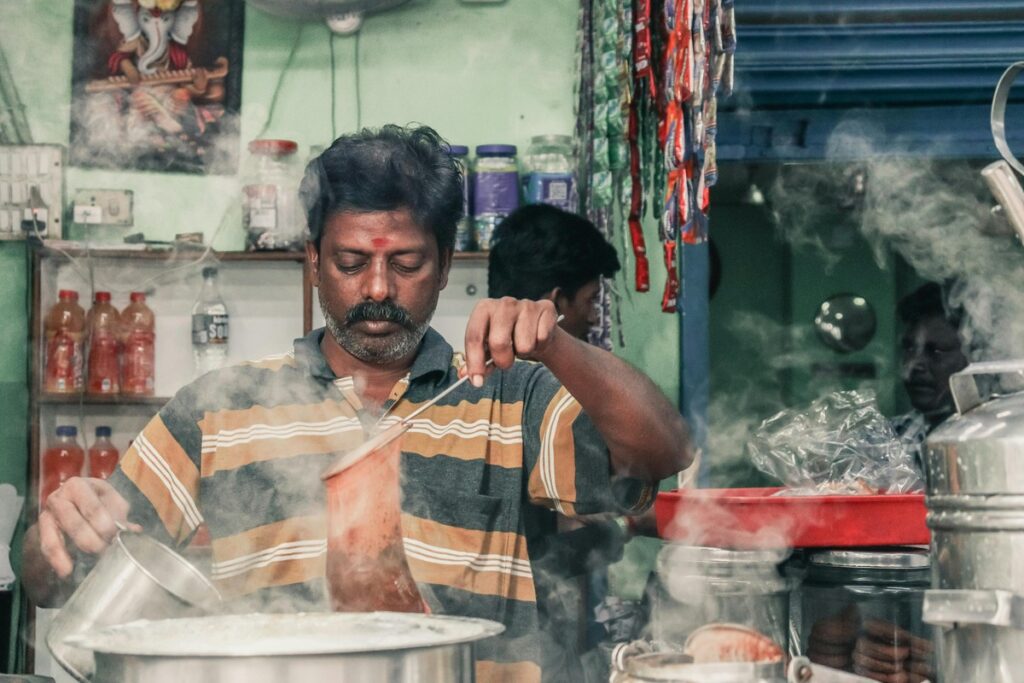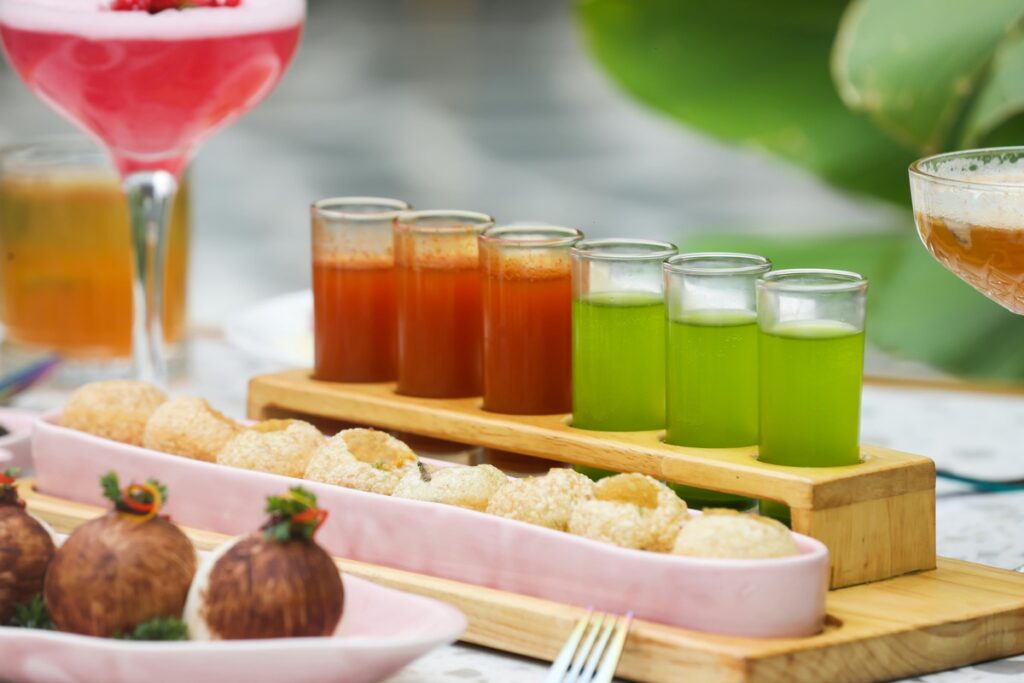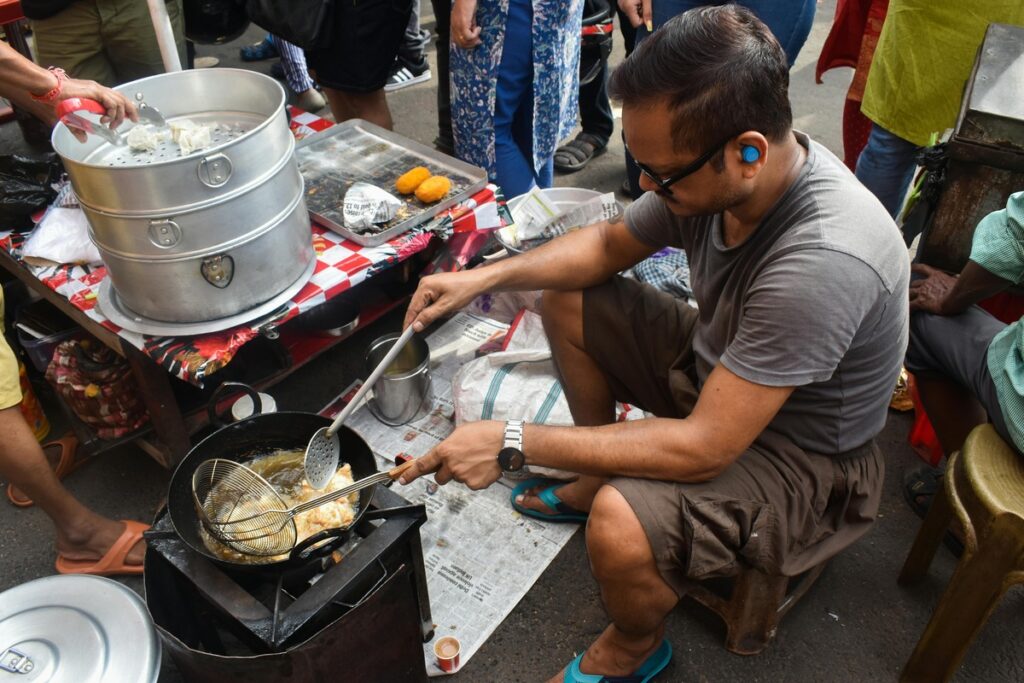You’re packed and ready for your Delhi adventure when someone drops the bomb: “Don’t get Delhi Belly!” And suddenly you’re imagining your dream trip derailed by an unwelcome bathroom marathon.
Let’s be real. Nothing ruins exploring the colorful markets of Old Delhi or marveling at the Taj Mahal quite like intestinal rebellion. But here’s the truth 60% of travelers don’t want to hear: Delhi Belly isn’t just bad luck—it’s often preventable.
This guide will arm you with practical strategies to avoid traveler’s diarrhea in India without becoming that paranoid tourist afraid to experience authentic culture.
The difference between spending your trip collecting memories versus collecting bathroom tiles? It might just come down to the five unexpected rules most travel blogs completely miss.

Understanding Delhi Belly: What It Is and Why It Happens
Delhi Belly, the colloquial term for traveler’s diarrhea in India, is perhaps the most infamous souvenir no visitor wants to bring home. This common ailment affects approximately 30-70% of travelers to India, particularly those visiting Delhi and other urban centers.
Common symptoms to watch for
The onset of Delhi Belly typically occurs within the first week of arrival and manifests through several distinct symptoms:
- Sudden and frequent watery diarrhea
- Abdominal cramps and pain
- Nausea and vomiting
- Low-grade fever
- General malaise and fatigue
- Urgent need to use the bathroom
- Dehydration symptoms (dry mouth, dizziness)
Most cases resolve within 3-5 days, but symptoms can disrupt travel plans completely during that time.
The science behind traveler’s diarrhea
Delhi Belly is primarily caused by consuming food or water contaminated with pathogens that your body isn’t accustomed to. The main culprits include:
- Bacteria: Especially enterotoxigenic E. coli (ETEC), which accounts for approximately 40-60% of cases
- Viruses: Norovirus and rotavirus
- Parasites: Including Giardia lamblia and Cryptosporidium
Your digestive system lacks immunity to these specific local strains, triggering an inflammatory response as your body attempts to flush out the invaders.
Why Delhi is particularly notorious
Delhi has earned its reputation as a hotspot for traveler’s diarrhea for several reasons:
- High population density: Creates challenges for sanitation infrastructure
- Street food culture: Widespread availability of uncovered food prepared in variable hygienic conditions
- Water quality issues: Municipal water systems that may not meet international standards
- Climate conditions: Heat and humidity that accelerate food spoilage
- Spice intensity: Unfamiliar spice combinations that can irritate sensitive digestive systems

High-risk seasons and conditions
Your risk of contracting Delhi Belly varies throughout the year:
- Monsoon season (June-September): Highest risk period due to flooding that can contaminate water supplies and create ideal breeding conditions for bacteria
- Summer months (April-June): Extreme heat accelerates food spoilage and pathogen multiplication
- Festival periods: Crowded conditions and mass food preparation increase contamination risks
- Fasting/feasting cycles: Food prepared in bulk and stored for extended periods during religious celebrations
Understanding these patterns helps you take appropriate precautions during your visit, particularly during high-risk periods.
Preventative Measures Before Your Trip
Essential vaccinations and medications
Before heading to Delhi, consult your healthcare provider at least 4-6 weeks prior to departure. Recommended vaccinations typically include Hepatitis A, Typhoid, and routine vaccines like MMR. These protect against food and waterborne illnesses that can contribute to Delhi Belly.
Pack a well-stocked medication kit including:
- Prescription antibiotics (like Ciprofloxacin or Azithromycin)
- Over-the-counter antidiarrheal medication (Loperamide/Imodium)
- Bismuth subsalicylate (Pepto-Bismol) which can be taken preventatively
- Oral rehydration salts to combat dehydration if illness strikes
Some travelers take a daily dose of Pepto-Bismol starting a day before arrival and continuing throughout their stay, which studies suggest may reduce the risk of traveler’s diarrhea by up to 60%.
Building gut immunity weeks before travel
Strengthening your digestive system before your trip can significantly reduce your susceptibility to Delhi Belly:
- Begin taking probiotics 2-3 weeks before departure to build beneficial gut bacteria
- Gradually introduce spicier foods into your diet to acclimate your stomach
- Consider dietary supplements like saccharomyces boulardii, shown to reduce traveler’s diarrhea risk
- Stay well-hydrated and maintain good digestive health through a balanced diet
- Reduce alcohol and caffeine consumption, which can disrupt gut flora
Avoid drastic changes to your diet just before traveling, as this can destabilize your digestive system at a crucial time.
Researching safe dining options in advance
Knowledge is your best defense against food poisoning in Delhi:
- Research restaurants with high hygiene ratings and positive reviews from foreign travelers
- Look for establishments popular with expatriates and diplomatic staff
- Download apps like TripAdvisor or Zomato that provide hygiene ratings
- Join travel forums or social media groups where recent visitors share dining recommendations
- Make note of hotel restaurants, which generally maintain higher food safety standards
- Identify food delivery services with good reputations if you prefer eating in your accommodation
- Consider booking accommodations with kitchen facilities so you can prepare some meals yourself
Creating a list of vetted dining options before arrival eliminates the need to make decisions when you’re hungry and potentially more willing to take risks.

Safe Food Practices in Delhi
Delhi’s vibrant food scene is a major attraction, but navigating it safely requires some strategic thinking. Implementing these food practices will significantly reduce your risk of Delhi Belly while still allowing you to enjoy the local cuisine.
Street Food Dos and Don’ts
Dos:
- Eat at stalls with high customer turnover and visible cooking processes
- Choose freshly cooked items prepared at high temperatures
- Look for vendors who handle food with gloves or tongs
- Opt for street food during peak hours when ingredients are fresher
Don’ts:
- Avoid pre-cut fruits or foods sitting in the open
- Skip items with uncooked garnishes like raw onions or coriander
- Stay away from vendors with unsanitary conditions
- Never consume food handled with bare hands after money handling
Restaurant Selection Criteria
When choosing restaurants in Delhi, prioritize:
- Establishments with good online reviews specifically mentioning food hygiene
- Places frequented by locals (though not exclusively)
- Restaurants with visible kitchen areas
- Establishments with proper refrigeration and food storage
- Clean bathrooms (a reliable indicator of overall hygiene standards)
Consider higher-end hotel restaurants for particularly sensitive stomachs, as they typically adhere to stricter food safety protocols.
Food Items to Embrace vs. Avoid
Embrace:
- Freshly cooked tandoori items (the clay oven reaches bacteria-killing temperatures)
- Hot, steaming curries and dals
- Freshly fried pakoras, samosas (if piping hot)
- Bread items like naan, roti, and paratha served directly from the tandoor
Avoid:
- Cold chutneys and raitas (unless at reputable restaurants)
- Buffet items, especially those at room temperature
- Raw vegetables and salads
- Unpasteurized dairy products like lassi from street vendors
The Power of Proper Cooking Temperatures
Proper cooking kills most harmful bacteria and parasites. Look for:
- Foods cooked above 160°F (71°C)
- Visible steam rising from food
- Dishes prepared to order rather than pre-cooked
- Meats with no pink center
Remember: “Boil it, cook it, peel it, or forget it” remains excellent advice in Delhi.
Decoding Local Menu Items Safely
Navigate Delhi’s menus with these tips:
- Thalis provide variety with minimal risk if served hot
- Kathi rolls are typically safe if freshly prepared
- Chaat requires caution—avoid versions with raw ingredients
- Biryani is generally safe due to prolonged cooking
- Pav bhaji is typically safe as it’s cooked at high heat
When in doubt, ask if items contain “kachcha” (raw) ingredients and request “garam” (hot) food.
Water Safety: Your First Line of Defense
Contaminated water is the primary culprit behind Delhi Belly. Taking proper precautions with your water consumption can significantly reduce your risk of illness while traveling in Delhi.
Bottled Water Guidelines and Trusted Brands
Always opt for sealed bottled water from reputable brands. Look for:
- Bisleri
- Kinley (Coca-Cola product)
- Aquafina (PepsiCo product)
- Himalayan
Check that the seal is intact before purchasing, as refilled bottles with tap water are occasionally sold to unsuspecting tourists. When dining at restaurants, request that bottles be opened in front of you to ensure authenticity.
Portable Purification Options for Travelers
For eco-conscious travelers or those visiting remote areas, consider these reliable purification methods:
- UV water purifiers: SteriPEN and similar devices kill 99.9% of harmful microorganisms
- Filtration bottles: LifeStraw or Grayl ultralight purifier bottles filter out bacteria and parasites
- Water purification tablets: Chlorine or iodine tablets work in approximately 30 minutes
- Portable boilers: Electric kettles that boil water to safe temperatures
Hidden Water Dangers (Ice, Brushing Teeth, Showers)
Vigilance extends beyond drinking water. Be aware of these hidden sources of contamination:
- Ice cubes: Avoid drinks with ice unless you’re certain it’s made from purified water
- Tooth brushing: Use bottled water for brushing teeth
- Showering: Keep your mouth closed while showering to avoid accidental ingestion
- Rinsing fruits: Always use purified water to rinse fruits and vegetables
- Swimming: Avoid swallowing water in pools or other water bodies
Safe Beverages Beyond Water
Stay hydrated with these safer alternatives:
- Hot beverages: Tea and coffee made with boiled water are generally safe
- Packaged drinks: Factory-sealed sodas, juices, and lassis
- Coconut water: Fresh coconut water served directly from the coconut is typically safe
- Alcoholic beverages: Beer, wine, and spirits with sealed caps (though excessive alcohol can worsen dehydration)
Remember that proper hydration is essential in Delhi’s often hot climate, but never compromise on water safety to quench your thirst.
Personal Hygiene Habits That Save Trips
Maintaining rigorous personal hygiene is your secret weapon against Delhi belly. While you can’t control everything in your environment, your personal habits can dramatically reduce your risk of traveler’s diarrhea.
Hand Sanitization Strategies
- Carry alcohol-based sanitizer: Keep a pocket-sized sanitizer (at least 60% alcohol) with you at all times. Use it before eating, after handling money, and after touching public surfaces.
- Sanitizing wipes: Pack antibacterial wipes for cleaning surfaces like restaurant tables, airplane trays, and hotel room remotes.
- Timing matters: Apply sanitizer after public transportation and before consuming any food – even packaged snacks.
- Let it dry: Allow sanitizer to fully air dry (about 20 seconds) to ensure maximum germ-killing effectiveness.
Proper Hand Washing Techniques When Soap Is Available
Hand washing remains superior to sanitizer when done correctly:
- Wet hands with clean running water (avoid standing water)
- Apply soap and lather thoroughly – don’t skimp on soap
- Scrub for 20 seconds – hum “Happy Birthday” twice for timing
- Focus on critical areas: between fingers, under nails, backs of hands
- Rinse thoroughly under clean running water
- Dry with clean paper towels or air dry – avoid communal towels
Managing Personal Items To Prevent Contamination
- Phone protection: Your smartphone harbors countless germs. Clean it regularly with appropriate wipes and avoid placing it on restaurant tables or bathroom surfaces.
- Water bottle hygiene: Clean your reusable bottle daily. Don’t let the drinking spout touch public surfaces.
- Eating utensils: Consider carrying a personal set of travel utensils. If using restaurant cutlery, wipe with a sanitizing wipe first.
- Toothbrush care: Keep your toothbrush in a ventilated case to prevent moisture buildup and never let it touch bathroom counters. Replace it if dropped on hotel bathroom floors.
- Bag placement: Never place backpacks or purses on bathroom floors. Use hooks when available or keep items in your lap.
These seemingly small hygiene practices can make the difference between a memorable trip and one spent confined to your hotel bathroom. Remember that consistency is key – one lapse in hygiene can introduce enough pathogens to cause illness.
Discover lesser know destinations of India at Top 10 hidden gems.
Essential Items for Your Delhi Travel Kit
Being prepared can make the difference between a minor inconvenience and a ruined vacation. Pack these essentials to stay healthy during your Delhi adventure.
Medications that should be in every bag
- Prescription antibiotics – Ciprofloxacin or Azithromycin are commonly prescribed for travelers. Consult your doctor before your trip.
- Loperamide (Imodium) – For symptom relief of diarrhea, though use with caution and never in cases of fever or bloody stools
- Bismuth subsalicylate (Pepto-Bismol) – Works as both preventative and treatment for mild stomach issues
- Antihistamines – For any allergic reactions to unfamiliar foods
- Acid reducers – Such as ranitidine or omeprazole for heartburn or indigestion
- Pain relievers – Acetaminophen or ibuprofen for fever and discomfort
Hydration solutions that work fast
- Oral rehydration salts (ORS) – Medical-grade electrolyte packets that quickly restore fluid balance
- Electrolyte tablets – Dissolve in bottled water for a quick hydration boost
- Coconut water powder – Natural electrolyte replacement that’s gentle on sensitive stomachs
- Hydration multiplier packets – Modern formulations designed for rapid absorption
- Portable water filter or purifier – Brands like LifeStraw or SteriPEN for emergency water purification
Comfort items for recovery
- Probiotic supplements – Shelf-stable varieties to help restore gut flora
- Herbal teas – Ginger or peppermint tea bags to soothe nausea and stomach discomfort
- Hot water bottle – Foldable or travel-sized for abdominal cramps
- Activated charcoal – Can help absorb toxins in mild food poisoning cases
- Comfortable clothing – Loose-fitting clothes that won’t aggravate an upset stomach
- Sleep mask and earplugs – To ensure quality rest during recovery
- Bedside container – In case of sudden illness during the night
Digital health resources and apps
- Telemedicine apps – Services like Doctor on Demand or Teladoc for virtual consultations
- Translation apps – To communicate symptoms accurately to local pharmacists
- Delhi hospital locator apps – To find the nearest medical facilities with English-speaking staff
- Medication reminder apps – To keep track of treatment schedules
- Symptom checkers – To help determine severity and appropriate action
- Food safety apps – Some apps now rate restaurants for hygiene standards in tourist areas
- Travel insurance portal – Have your insurance details and emergency contact information readily accessible

What To Do If Delhi Belly Strikes
Despite your best preventative efforts, Delhi Belly may still strike. When it does, having a plan can make all the difference between a minor inconvenience and a ruined trip.
First 24-hour Action Plan
When symptoms begin:
- Stop eating solid foods temporarily to give your digestive system a rest
- Focus on hydration – small sips of bottled water or oral rehydration solutions (ORS)
- Take activated charcoal tablets which can help absorb toxins
- Rest as much as possible – avoid sightseeing or strenuous activities
- Begin a BRAT diet (Bananas, Rice, Applesauce, Toast) once you can tolerate food
Recognizing When to Seek Medical Help
While most cases of Delhi Belly resolve within 3-5 days, certain symptoms warrant immediate medical attention:
- Fever above 102°F (39°C)
- Severe abdominal pain that doesn’t improve
- Blood in stool
- Vomiting that prevents keeping down liquids for more than 12 hours
- Signs of dehydration (extreme thirst, dry mouth, little/no urination, severe weakness)
- Symptoms persisting beyond 5 days
Local Pharmacies and Healthcare Options
India has accessible healthcare options when needed:
- Pharmacies are abundant in Delhi and pharmacists can often recommend over-the-counter remedies
- Apollo Pharmacy and Guardian Pharmacy chains are reliable with English-speaking staff
- For medical consultation, Max Healthcare and Apollo Hospitals have international patient services
- Keep your travel insurance information handy and know how to contact their 24/7 assistance line
- Consider telemedicine options through your travel insurance for initial consultations
Recovery Nutrition Strategies
As symptoms improve:
- Gradual reintroduction of solid foods, starting with bland options
- Eat small, frequent meals rather than large portions
- Yogurt with live cultures can help restore gut flora (ensure it’s from a reliable source)
- Avoid dairy, spicy foods, caffeine, and alcohol until fully recovered
- Continue hydrating with electrolyte solutions even as you feel better
Adjusting Your Travel Plans Responsibly
When illness disrupts your itinerary:
- Be realistic about recovery time – pushing too hard can prolong illness
- Modify rather than cancel – consider less strenuous activities or sites closer to your accommodation
- Inform tour operators if you need to skip planned activities
- Consider extending your stay in one location rather than traveling while recovering
- Create a comfortable recovery space with easy access to bathroom facilities and necessary supplies
Remember that recovery is individual – listen to your body and don’t rush back to your normal diet or activity level too quickly.
Protecting yourself from Delhi Belly requires vigilance and preparation. From understanding how this common traveler’s ailment occurs to taking preventative measures before your trip, this guide has covered essential strategies to keep you healthy. Remember to practice safe food habits, maintain strict water safety protocols, and follow personal hygiene practices that significantly reduce your risk while exploring Delhi.
Don’t let concern about Delhi Belly dampen your enthusiasm for experiencing India’s magnificent capital. By packing a well-stocked travel health kit and knowing exactly what to do if symptoms appear, you can travel with confidence. Follow these practical tips, trust your instincts about food and water choices, and focus on creating memorable experiences rather than worrying about potential health setbacks. Happy and healthy travels!
For immersive culture walks in India, visit 5 Senses Walks.
Discover more from Great Holiday Ideas
Subscribe to get the latest posts sent to your email.